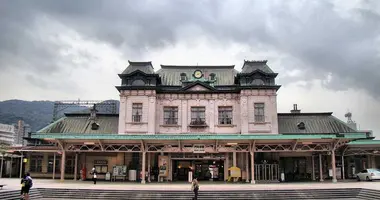Karatsu Castle: A seaside fortress with a rich history
- Published on : 17/06/2024
- by : Japan Experience
- Youtube
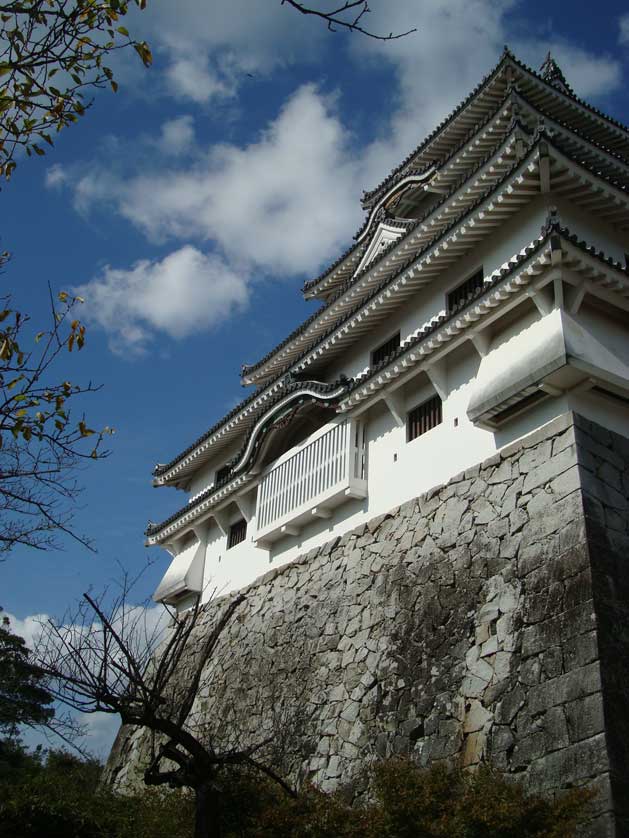
Perched on a small hill overlooking Karatsu Bay in Saga prefecture, Karatsu Castle stands as a testament to Japan's feudal past. This iconic structure, also known as "Maizuru-jo" or "Dancing Crane Castle," seems to rise from the sea, its graceful silhouette reminiscent of a crane spreading its wings. Built in the early 17th century, Karatsu Castle has witnessed centuries of cultural and economic growth, playing a pivotal role in shaping the region's history. Today, it continues to captivate visitors with its unique architecture, panoramic views, and rich cultural significance. As you explore this seaside fortress, you'll discover a fascinating blend of military strategy, artistic beauty, and enduring Japanese traditions. What secrets lie within its stone walls? How has this castle shaped the destiny of Karatsu? Let's embark on a journey through time to uncover the captivating story of Karatsu Castle.
Overview and historical significance of Karatsu Castle
Karatsu Castle, constructed between 1602 and 1609, holds a significant place in Japanese history. It was built by Terasawa Hirotaka, a former vassal of Toyotomi Hideyoshi who sided with Tokugawa Ieyasu at the decisive Battle of Sekigahara. This strategic alliance proved crucial, as it led to Hirotaka being rewarded with greater lands around Karatsu, forming a domain of 123,000 koku (a measure of wealth based on rice production).
The castle's construction marked the beginning of Karatsu's prominence as a castle town. Its location was carefully chosen, situated on a hill overlooking Karatsu Bay, which provided natural defenses and strategic advantages. Interestingly, materials from the nearby Nagoya Castle (not to be confused with Nagoya Castle in Aichi Prefecture) were used in its construction, linking Karatsu Castle to the ambitious Korean invasion plans of Toyotomi Hideyoshi.
Throughout the Edo Period (1600-1868), Karatsu Castle changed hands several times, being controlled by various clans including the Okubo, Matsudaira, Doi, Mizuno, and finally the Ogasawara clan. Each of these ruling families left their mark on the castle and the surrounding domain, contributing to its rich and diverse history.
Architecture and unique features of the "Dancing Crane Castle"
Karatsu Castle's architecture is a prime example of the hirayama-style Japanese castles, built on a plain rather than on a mountain. What sets it apart is its unique positioning facing the ocean - a rarity among Japanese castles. This strategic location not only provided a natural moat but also allowed the castle to serve as a watchful guardian over maritime activities.
The castle's most distinctive feature is its stone walls rising directly from the water, an unusual characteristic seen in only a handful of Japanese castles. This design not only enhanced the castle's defenses but also created a striking visual effect, earning it the poetic name "Maizuru-jo" or "Dancing Crane Castle."
The current five-story, five-tiered castle keep, while a modern reconstruction, faithfully replicates the style of the original 17th-century structure. It features elegant curved roofs, white plastered walls, and intricate wooden detailing typical of Japanese castle architecture. The castle's silhouette, when viewed against the backdrop of Karatsu Bay and the surrounding landscape, indeed resembles a crane with outstretched wings, living up to its evocative nickname.
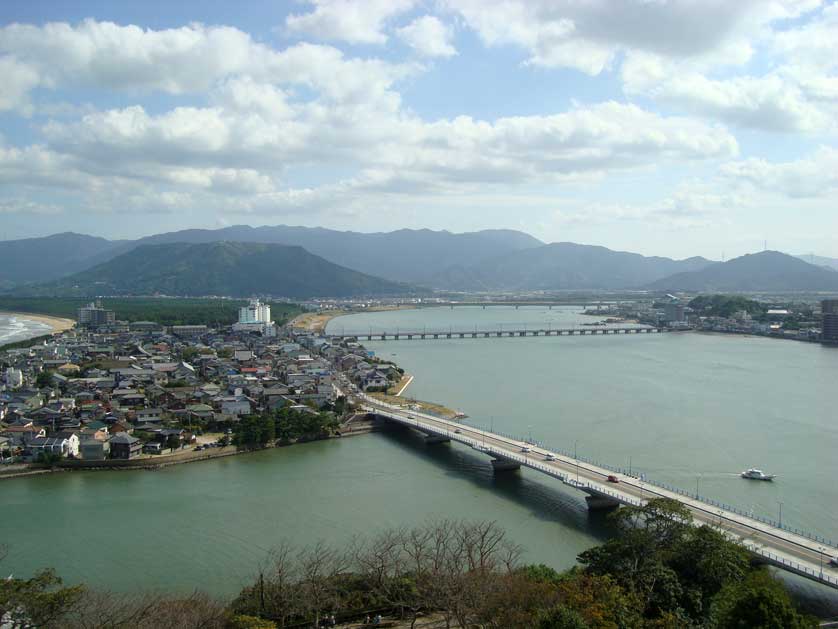
View of Karatsu town from Karatsu Castle in Saga Prefecture, Kyushu
Construction and development under various feudal lords
The construction of Karatsu Castle was a monumental undertaking that spanned seven years, from 1602 to 1609. Under the direction of Terasawa Hirotaka, the castle took shape using materials from the dismantled Nagoya Castle, a testament to the resourcefulness and efficiency of Japanese castle builders of the time.
Interestingly, the Tokugawa shogunate ordered neighboring tozama domains (those not closely allied with the Tokugawa) to contribute to its construction, primarily by excavating its network of moats. This practice was not uncommon and served as a way for the shogunate to assert its authority and keep potentially rebellious domains occupied.
Over the centuries, each ruling clan made its own contributions to the castle's development:
- The Okubo clan (1649-1678) focused on strengthening the castle's defenses.
- The Matsudaira clan (1678-1691) made improvements to the castle town.
- The Doi clan (1691-1762) invested in the cultural development of the domain.
- The Mizuno clan (1762-1817) and the Ogasawara clan (1762-1871) continued to maintain and enhance the castle and its surroundings.
These successive improvements and modifications shaped Karatsu Castle into the complex structure it became, reflecting the changing needs and tastes of its various lords.
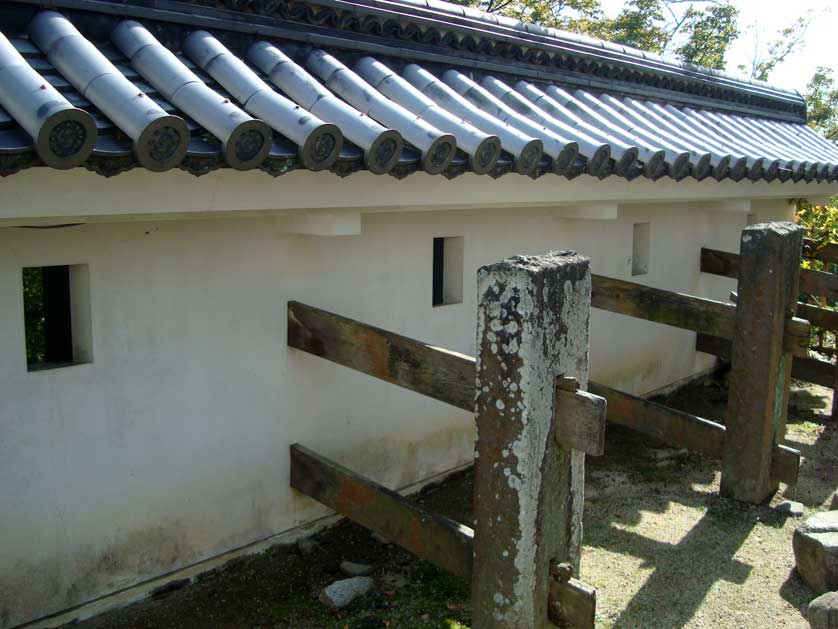
Firing positions in a wall at Karatsu Castle in Saga Prefecture, Kyushu
The castle's role in Karatsu's cultural and economic growth
Karatsu Castle played a pivotal role in the cultural and economic development of the region. As the seat of power for the Karatsu domain, it attracted skilled craftsmen, artists, and merchants, fostering a vibrant local culture.
One of the most significant cultural contributions associated with Karatsu Castle is the development of Karatsu-yaki pottery. This distinctive style of ceramics, characterized by its rustic beauty and earthy tones, flourished under the patronage of the castle lords. Today, Karatsu-yaki remains a cherished part of Japanese ceramic tradition, with many visitors to the castle also exploring local pottery studios and galleries.
The castle also played a crucial role in Karatsu's economic growth. Its strategic location near the coast made it an important center for maritime trade, particularly with Korea and China. This position allowed Karatsu to become a prosperous port town, facilitating the exchange of goods and ideas that enriched the local culture.
Furthermore, the castle was instrumental in the development of the Karatsu Kunchi Festival, an annual event that has been celebrated for over 400 years. This festival, with its elaborate floats and lively processions, not only showcases the rich cultural heritage of Karatsu but also attracts tourists from all over Japan, contributing significantly to the local economy.
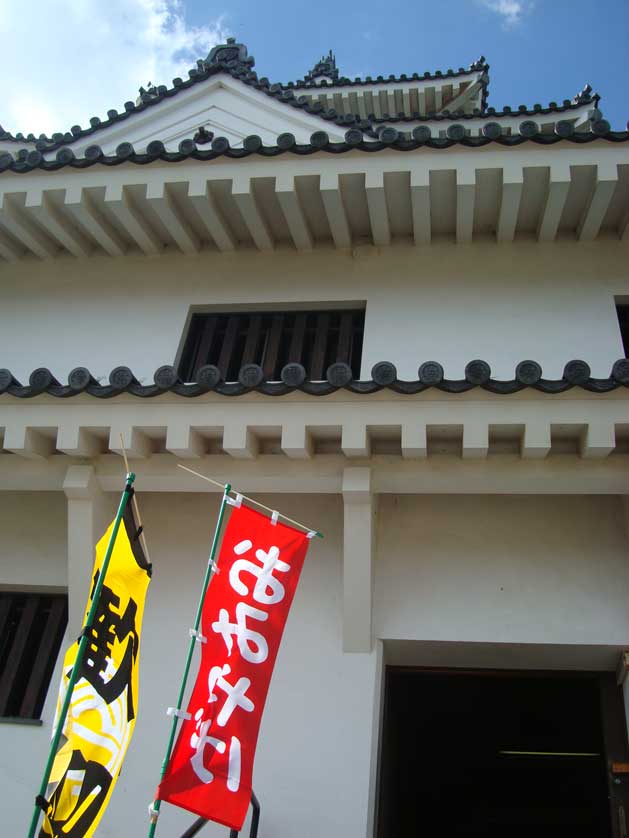
Destruction, reconstruction, and modern-day attractions
Following the Meiji Restoration of 1868, Karatsu Castle, like many other feudal castles across Japan, faced a period of decline. In 1871, with the abolition of the han system, the castle lost its administrative function. The castle keep was pulled down in 1872, leaving only the stone walls and foundations as part of the newly established Maizuru Park in 1877.
However, recognizing the historical and cultural significance of the castle, efforts were made to preserve its legacy. In 1966, a concrete reconstruction of the five-story castle keep was built in the style of the original 17th-century structure. While not an original feudal-era construction, this reconstruction allows visitors to appreciate the castle's imposing presence and architectural beauty.
Today, Karatsu Castle houses a museum that offers visitors a glimpse into the area's rich history. The castle exhibits include:
- Samurai arms and armor, including swords, pikes, and firearms
- Local Karatsu-yaki ceramics
- Historical documents
- Original roof tiles from the castle
The castle grounds, now part of Maizuru Park, are renowned for their seasonal beauty. Visitors can enjoy stunning displays of cherry blossoms in spring, vibrant azaleas in early summer, and colorful autumn foliage. The park also offers excellent views of Karatsu Bay and the surrounding city, making it a popular spot for both tourists and locals alike.
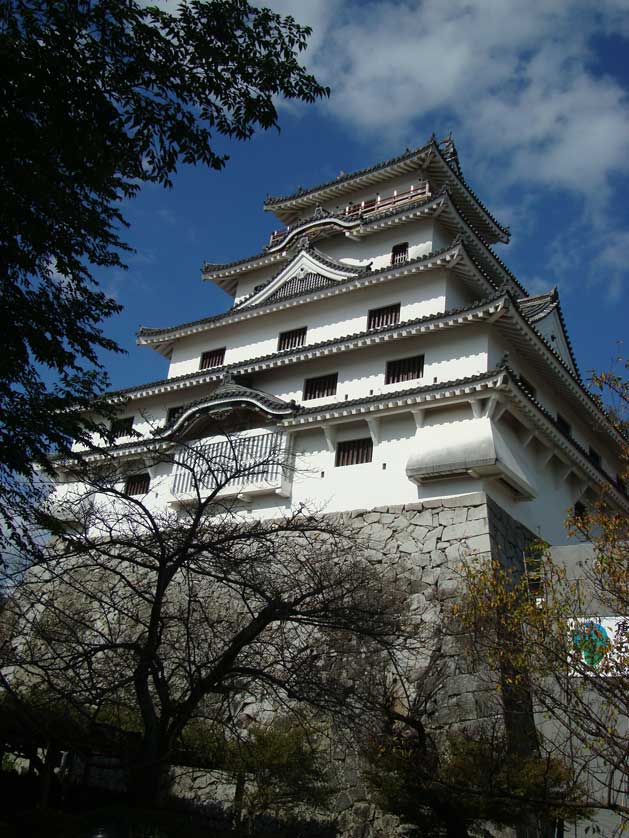
The present Karatsu Castle dates from 1966 and was constructed in the style of the original Edo Period castle
Exploring Karatsu Castle: What visitors can expect
A visit to Karatsu Castle offers a rich and varied experience for history enthusiasts, culture lovers, and casual tourists alike. Here's what visitors can expect when exploring this seaside fortress:
1. Castle Keep: The reconstructed five-story castle keep serves as the centerpiece of the visit. Visitors can climb to the top floor for panoramic views of Karatsu Bay, the city, and the surrounding landscape. Each floor of the keep houses exhibits on local history and castle architecture.
2. Museum Exhibits: The castle functions as a museum, showcasing a variety of historical artifacts. Visitors can examine samurai armor, weapons, and get a sense of the castle's military importance. The displays of Karatsu-yaki pottery provide insight into the region's artistic heritage.
3. Stone Walls: The original stone walls, some of which rise directly from the water, are a highlight of the visit. They offer a tangible link to the castle's feudal past and demonstrate the impressive engineering skills of the time.
4. Maizuru Park: The castle grounds, now part of Maizuru Park, offer beautiful walking paths and gardens. Depending on the season, visitors might enjoy cherry blossoms, azaleas, or autumn foliage.
5. Cultural Events: Throughout the year, the castle hosts various cultural events and festivals. The most famous is the Karatsu Kunchi Festival in November, but there are also smaller events like tea ceremonies and historical reenactments.
To make the most of your visit, consider taking a guided tour or using the available audio guides. These can provide deeper insights into the castle's history and significance. Don't forget to check the official website for current admission fees, opening hours, and any special exhibitions or events.
Seasonal highlights and panoramic views from Karatsu Castle
Karatsu Castle offers breathtaking views and unique experiences throughout the year, making it a destination worth visiting in any season. Here are some seasonal highlights to consider when planning your visit:
Spring (March to May): This is perhaps the most popular time to visit Karatsu Castle. The castle grounds come alive with the blooming of hundreds of cherry blossom trees, typically in late March to early April. The sight of pink sakura petals against the backdrop of the white castle and blue sea is truly spectacular. Following the cherry blossoms, the wisteria begin to bloom in late April, draping the castle in cascades of purple flowers.
Summer (June to August): While the heat can be intense, summer offers clear skies that enhance the panoramic views from the castle tower. The lush greenery of the surrounding park provides a beautiful contrast to the white castle walls. Summer evenings often feature special light-up events, creating a magical atmosphere.
Autumn (September to November): Fall brings a riot of color to Karatsu Castle as the leaves change. The combination of red and gold foliage with the castle's architecture creates stunning photo opportunities. November is particularly exciting due to the Karatsu Kunchi Festival, when elaborate floats are paraded through the city streets.
Winter (December to February): While colder, winter offers crisp, clear days that provide unparalleled views from the castle tower. On rare occasions, a light dusting of snow can transform the castle into a winter wonderland. The quieter winter months also allow for a more peaceful exploration of the castle grounds.
Regardless of the season, the panoramic views from the top floor of Karatsu Castle are always impressive. To the west, visitors can see the expansive Genkai Sea and Takashima Island. To the east, the view encompasses the city of Karatsu and the picturesque Niji no Matsubara pine grove. On clear days, you might even spot Hirado Castle in the distance.
For photography enthusiasts, the best times for capturing the castle are often early morning or late afternoon when the soft light enhances the castle's features. During your visit, take a moment to appreciate how the changing light and seasons transform the appearance of this magnificent structure, offering a new perspective with each visit.
Whether you're interested in Japan Book Reviews to learn more about castles, or you're planning your next adventure, Karatsu Castle offers a rich tapestry of experiences that change with the seasons, ensuring that each visit is unique and memorable.
